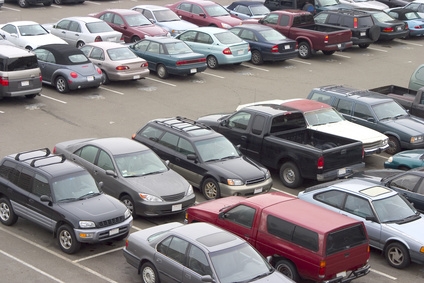
Parking a car seems simple, but it often results in fender-bender incidents, and sometimes serious accidents, injuries or death. According to the Independent Insurance Agents of America (IIAA), one in five automobile insurance claims comes from incidents in parking lots. Parking can be difficult in crowded lots and streets, but it can be done in a safe manner.
Drivers should look for parking spots that will not crowd the vehicles next to them. The car should be parked in the center of the parking space with ample room on both sides for passengers to get out. It also is recommended by the National Safety Council that vehicles back into a parking space to allow them an easier and safer exit. Their rationale is that people usually pay greater attention when backing into a parking space, but not when backing out. They may be in a hurry or distracted, which creates the risk of hitting pedestrians or other vehicles.
According to the National Safety Council, one of four vehicle accidents are caused by backing moves. Backing accidents cause 500 deaths and 15,000 injuries per year. In tight spaces, it is a good idea to do a walk-around of the vehicle before backing, to look for hidden hazards and gauge the available space. If you have pulled into a parking space, you can do the walk-around as you approach the vehicle before leaving the space. Look for possible children in the area, potholes or tire obstructions. After the walk-around, the driver should get in the vehicle and begin backing in a timely fashion to minimize the risk of changing conditions, such as children walking behind the vehicle. If possible, have a spotter assist with the backing using hand signals instead of verbal signals. Drivers need to practice patience in safe surroundings until they become familiar with the way the vehicle backs.
For each type of parking situation, drivers should signal and stop about six to eight feet from the space to alert vehicles behind them of their intentions. Drivers should always scan the space for people or obstructions before proceeding. Proceeding into the space slowly is important in the event an object or person comes into view as the driver pulls into the spot. Most parking situations involve angle or perpendicular parking. In these cases, the car should be stopped even with the curb or parking line to avoid tripping hazards for pedestrians walking past. For parallel parking, drivers must be even more cautious about the traffic around them and the pedestrians and vehicles they will be parking in between. Scanning the area multiple times is usually best. When parking on a hill, it is important to apply the brake and approach parallel to and 12 inches from the curb. If facing uphill, the wheels should be turned left and toward the road. If facing downhill, the wheels should be turned right and toward the curb. The parking brake also should be set.
Crimes in parking lots and areas are common and are a large factor in car parking safety. The IIAA reports that 80 percent of crimes committed at shopping facilities occur in parking lots. To avoid carjackings, theft, vandalism and other crimes, drivers should only park in well-lit areas. They should keep their doors locked until their belongings are gathered, and then quickly exit the vehicle. Car doors and windows should always be kept locked and shopping bags and valuables kept out of sight. When approaching the vehicle to leave, drivers should have their keys ready while scanning the area attentively for possible trouble.